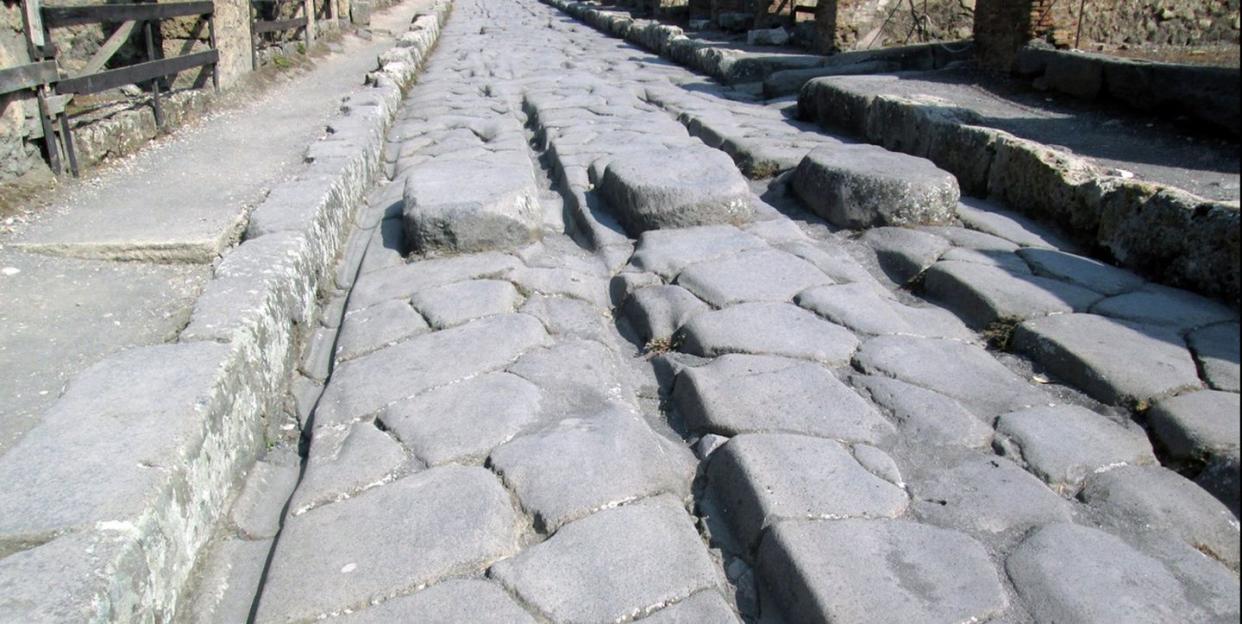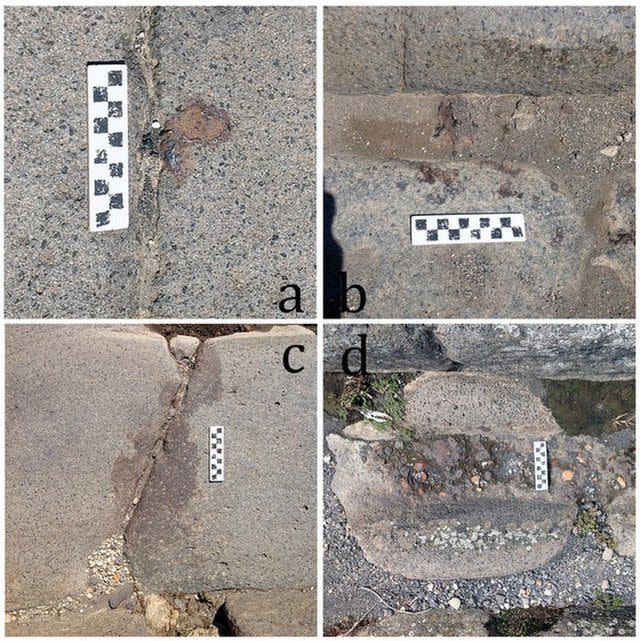Just Like Us, Pompeii Also Struggled With Potholes

It's easy to forget that Pompeii, famed for its destruction from nearby Mount Vesuvius, was actually a vibrant city in ancient Rome. And being a city meant handling the same challenges that cities face in the modern world: In the days and weeks before the explosion, Pompeians used molten iron to fix their roads, finds a new study.
The size of the Roman Empire allowed it certain technical advantages; after its conquest of Britain, for example, it had access to the region's massive iron deposits. An area of southern England known as the Weald was pumping out more than 550 tons of wrought iron alone.
That iron was crucial for infrastructure around the Empire. The stone-paved streets of Pompeii were perfect candidates for needing a fix. Pompeii's streets were paved with silex, or cooled lava stone. But the frequently used roads eventually fell into disrepair.
According to Pompeii scholar Eric Poehler, who is also behind the latest research, the roads were extremely narrow and designed to also handle sewage. That heavy usage led to cavities developing in the stones, gradually worn down by constant use over decades.
"One option for repair, complete repaving in stone, was a difficult and expensive endeavor that might block important through-routes in a city for months," Poehler and his co-authors, Juliana van Roggen and Benjamin M. Crowther write in their latest paper, published in the American Journal of Archaeology. That meant the Pompeians needed to think outside the box.
So they turned to areas like the Weald. "The Pompeians devised another option that was ingenious and unconventional: After heating iron or iron-rich slag to a molten state, they poured out hundreds of individual repairs onto, into, and below the paving stones of the city's most important streets," Poehler and his co-authors say.

The molten iron would be poured into holes in the street and harden as it cooled down, which was faster than repaving the entire street. But since they would have needed to heat up iron or iron slag between 2,012 and 2,912 degrees Fahrenheit, "how the Romans introduced liquefied iron material into the streets at Pompeii remains a mystery," the researchers write.
However, the scientists have a theory: slaves.
Slaves would run from the furnaces-which Poehler and his team proved could reach the needed temperatures-to the streets with the piping hot liquid. They found drops of iron speckled around roads that didn't require any repair, which calls to mind the image of a person running while holding an incredibly hot liquid and spilling some of it.
A few weeks later, of course, all the street repairs in the world wouldn't make a difference. But the new finding shows that even millennia apart, cities face the same problems of making roads work. It's just that today, Domino's Pizza is probably doing the fixing.
Source: LiveScience
('You Might Also Like',)

